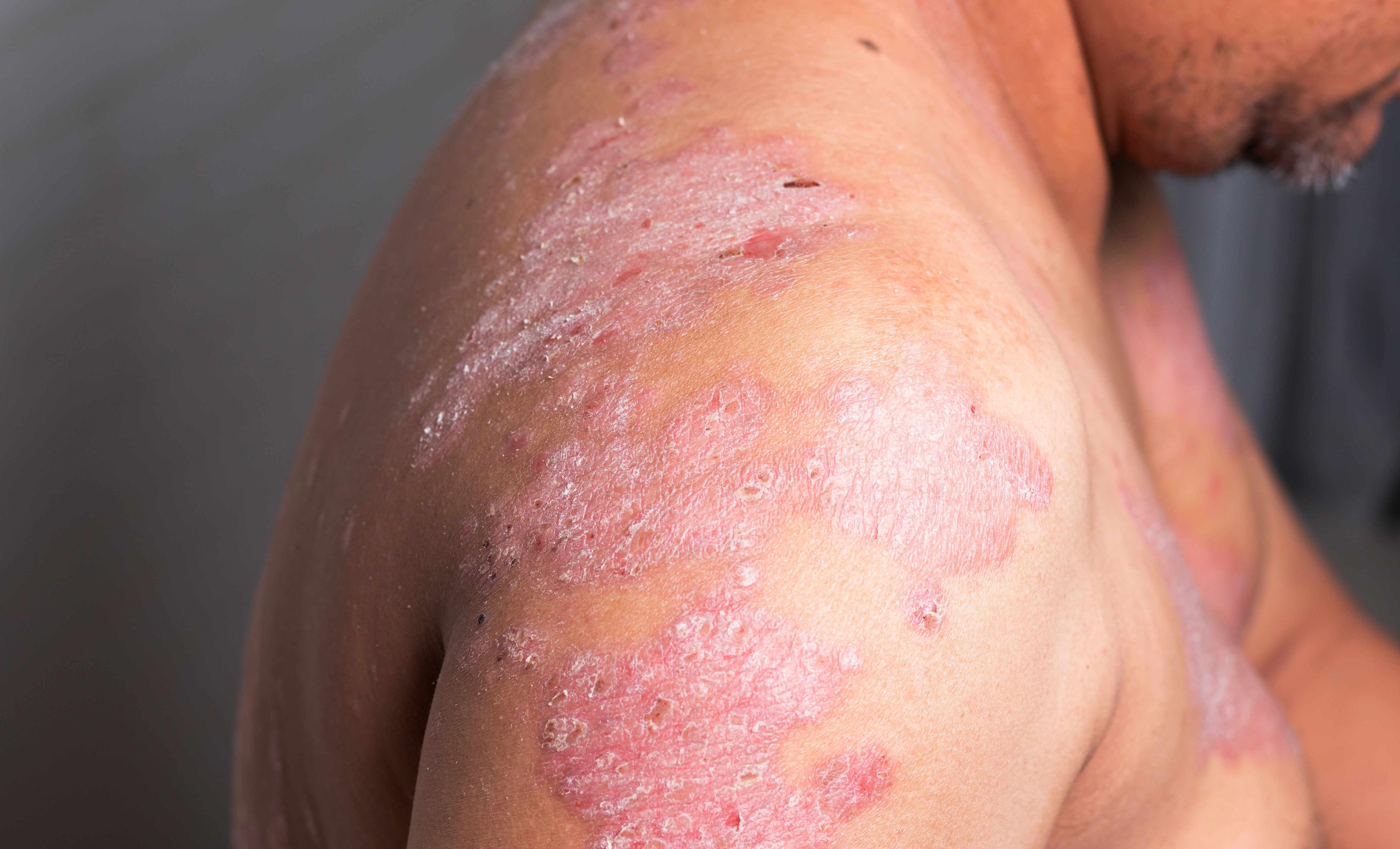- Case-Based Roundtable
- General Dermatology
- Eczema
- Chronic Hand Eczema
- Alopecia
- Aesthetics
- Vitiligo
- COVID-19
- Actinic Keratosis
- Precision Medicine and Biologics
- Rare Disease
- Wound Care
- Rosacea
- Psoriasis
- Psoriatic Arthritis
- Atopic Dermatitis
- Melasma
- NP and PA
- Skin Cancer
- Hidradenitis Suppurativa
- Drug Watch
- Pigmentary Disorders
- Acne
- Pediatric Dermatology
- Practice Management
- Prurigo Nodularis
- Buy-and-Bill
Publication
Article
Dermatology Times
Socioeconomic factors affect psoriasis treatment outcomes
Author(s):
A recent, extreme case of psoriasis demonstrates how socioeconomic factors can lead to inadequate disease control. The solution? A personalized treatment plan, says the study authors.
A recent, extreme case of psoriasis demonstrates how socioeconomic factors can lead to inadequate disease control. The solution? A personalized treatment plan, says the study authors. (Nikkikii - stock.adobe.com)

A case involving a 35-year-old patient who presented with extensive psoriasis illustrates the variety of socioeconomic factors that can create barriers for adequate healthcare. It should also remind physicians that they have a responsibility to act as patient advocates and should strive to provide patients with personalized treatment plans that can optimize outcomes given their unique circumstances, according to the physicians from the University of Missouri School of Medicine in Columbia, Mo., who reported the case.
RELATED: Sustaining a socioeconomically inclusive dermatology practice
The patient had erythematous plaques with adherent hyperkeratotic silvery scales covering his scalp, face, limbs and trunk. He reported progressive worsening of the rash and fatigue over the previous 2 months. The patient had a past medical history of schizoaffective disorder, limited exposure to healthcare, and was not being seen regularly by a primary care physician.
The patient said he had first developed the rash at age 21 and was then diagnosed with plaque psoriasis. Previous treatments included topical corticosteroids – triamcinolone and clobetasol – and systemic therapies – methotrexate and cyclosporine – but they were minimally effective. Recently the patient had started treatment with apremilast, and he reported that it was effective for controlling his psoriasis. However, the cost of the medication and his limited access to healthcare resulted in poor treatment adherence.
Because of the severity and extent of the rash, the physician who saw the patient questioned whether it was plaque psoriasis. A skin biopsy was performed, and the results confirmed the diagnosis. The patient was prescribed topical triamcinolone, and it was effective for markedly improving the rash.
RELATED: Racial disparities in psoriasis treatment
The authors of the case report noted that it represents an extreme manifestation of a common, easily treated disease that went untreated because of multiple systemic and socioeconomic barriers. Citing the trend of rising overall costs of healthcare, they cautioned that it will become exceedingly difficult to find ways to provide patients with optimal and affordable care.
The authors also pointed out that higher out-of-pocket costs for patients are another consequence of rising health care costs. As occurred in the reported case, medication cost can limit treatment adherence.
RELATED: Access to dermatologic care varies by demographic
In addition, the authors raised concern that medication non-adherence may be an unintended result of movements advocating for patients with chronic medical conditions to assume more independence in managing their disease. Referring again to the reported case, the authors noted that this type of treatment paradigm is inherently flawed for some individuals and can doom them to failure.
Citing another published paper on factors underlying medication nonadherence, the authors of the case stated, “In patients with limited access to healthcare, poor healthcare literacy, and other socioeconomic barriers; the social support system, the cost-effectiveness of planned interventions, and the burden on the patient must all be considered when designing an efficacious treatment plan.”
References:
Patel T, Karle E, Krvavac A. Socioeconomic barriers in the treatment of psoriasis. QJM. 2019;






